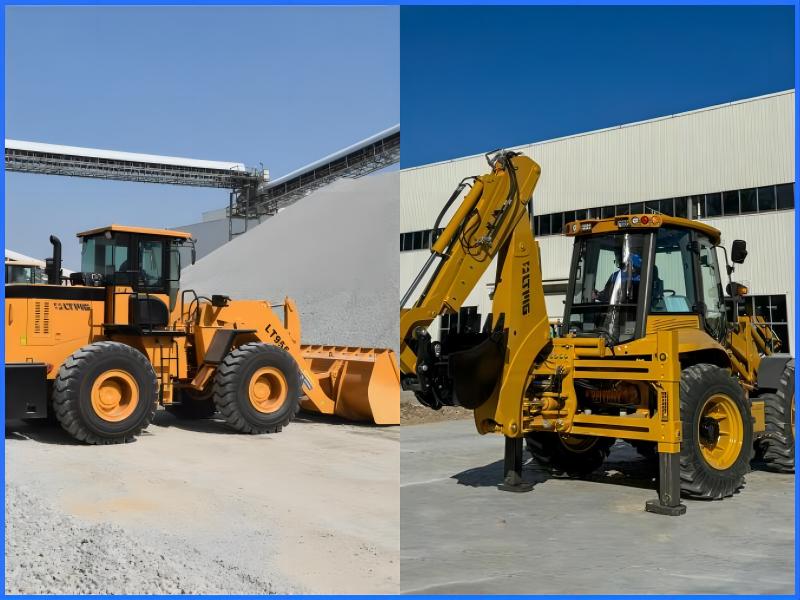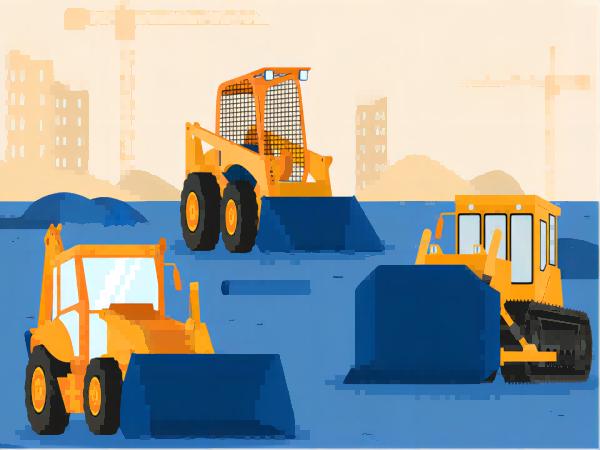Backhoe vs. Payloader: Choosing the Right Heavy Equipment for Your Construction Projects
Feb 28, 2024
In the dynamic world of construction, the efficiency and effectiveness of earth moving equipment can significantly impact project timelines and budgets. Among the essential machinery are the backhoe loader and payloader, each offering unique features and capabilities. In this comprehensive comparison, LTMG team delve into the intricacies of these two stalwarts of construction sites to help you make informed decisions for your projects.
What Is A Backhoe Loader?
A backhoe is a versatile piece of equipment commonly found on construction sites worldwide. It comprises a tractor-like unit with a rear-mounted digging bucket and a front-mounted loading bucket. This configuration allows it to perform a range of tasks efficiently, from excavating to loading and backfilling.
Features and Functions:
The backhoe's design enables it to dig trenches, foundations, and holes with precision. Its hydraulic system provides ample power to maneuver heavy loads and operate various attachments, such as augers and breakers. Additionally, its compact size makes it suitable for navigating tight spaces on construction sites.
Advantages and Disadvantages:
One of the main advantages of a backhoe is its versatility, as it can perform multiple tasks with one machine. However, its smaller loading capacity compared to other equipment like payloaders can be a limitation, especially for large-scale projects requiring significant material handling.
Applications in Construction Industry:
Backhoes find widespread use in residential construction, landscaping, utility installations, and smaller excavation projects. Their agility and versatility make them indispensable for tasks requiring precision and maneuverability.
What Is A Playloader?
A payloader, also known as a front-end loader, is a heavy-duty machine primarily designed for material handling and earthmoving tasks. It features a large, front-mounted bucket supported by hydraulic arms, allowing it to scoop and transport large volumes of material efficiently.
Types of Payloader:
Payloaders come in various sizes and configurations, ranging from compact models for light-duty tasks to large wheel loaders capable of handling substantial loads. The choice depends on the specific requirements of the project and the terrain.
Features and Functions:
The primary function of a payloader is material handling, including loading trucks, stockpiling materials, and clearing debris. Its robust construction and powerful engine enable it to operate in demanding conditions, making it ideal for heavy-duty applications.
Advantages and Disadvantages:
One of the key advantages of a payloader is its high loading capacity, allowing for faster completion of material handling tasks. However, its size and weight can be a drawback in confined spaces or on sensitive surfaces.
Applications in Construction Industry:
Payloaders are essential for large-scale earthmoving projects, such as road construction, mining operations, and bulk material handling at industrial sites. Their efficiency in moving large volumes of material makes them indispensable for maximizing productivity on such projects.
Comparison:
While both backhoes and payloaders excel in construction applications, they serve different purposes and have distinct characteristics. Backhoes are more versatile and suitable for precision work and smaller projects, while payloaders are better suited for heavy-duty material handling tasks and larger construction sites.
Similarities between Backhoe and Payloader:
Both backhoes and payloaders are essential pieces of equipment in the construction industry, contributing to increased efficiency and productivity on job sites. They are powered by hydraulic systems, allowing for precise control and operation of attachments.
Which is Better for Certain Types of Construction Jobs?
The choice between a backhoe and a payloader depends on the specific requirements of the project. Backhoes are ideal for tasks that require precision digging and maneuverability, such as trenching and utility installations. On the other hand, payloaders excel in material handling tasks, such as loading trucks and stockpiling materials on large-scale projects.
Factors to Consider When Choosing:
Several factors should be taken into account when deciding between a backhoe and a payloader, including the type of job, terrain conditions, project budget, operator skills and training, and maintenance and repair costs. Assessing these factors carefully will help ensure that the chosen equipment meets the project's needs effectively.
1. Type of Job:
The nature of the construction project plays a significant role in determining whether a backhoe or a payloader is the more suitable choice. For tasks requiring precise excavation, such as digging trenches or installing utilities, a backhoe's versatility and maneuverability make it an excellent option. Conversely, projects involving extensive material handling, such as loading trucks with aggregate or moving large quantities of soil, may benefit more from the high loading capacity and efficiency of a payloader.
2. Terrain Conditions:
The terrain on which the construction project is located can heavily influence the choice between a backhoe and a payloader. Backhoes excel in navigating uneven or confined spaces, thanks to their compact size and ability to pivot easily. In contrast, payloaders, with their large size and robust construction, are better suited for operating on flat or stable terrain where their high loading capacity can be fully utilized without compromising stability or safety.
3. Project Budget:
Budgetary constraints often play a significant role in equipment selection for construction projects. While both backhoes and payloaders represent significant investments, their costs can vary depending on factors such as size, capacity, and features. Evaluating the project budget in conjunction with the specific requirements and expected returns can help determine whether investing in a backhoe or a payloader provides the best value and cost-effectiveness over the project's duration.
4. Operator Skills and Training:
The proficiency and experience of the equipment operators are crucial considerations when choosing between a backhoe and a payloader. While both machines require specialized training and skills to operate safely and efficiently, the learning curve may vary depending on the operator's background and familiarity with similar equipment. Assessing the availability of skilled operators and the resources required for training can influence the decision-making process and ensure optimal performance on the job site.
5. Maintenance and Repair Costs:
Another important factor to consider is the long-term maintenance and repair costs associated with owning and operating a backhoe or a payloader. While routine maintenance is essential for both types of equipment to ensure reliability and longevity, factors such as ease of maintenance, availability of spare parts, and serviceability can affect overall operating costs. Additionally, considering factors such as warranty coverage and aftermarket support can help mitigate the risk of unexpected expenses and downtime, ultimately contributing to the equipment's overall cost-effectiveness over its lifecycle.
The choice between a backhoe and a payloader can significantly can contribute to improved efficiency, productivity, and cost-effectiveness, helping to ensure the successful completion of construction projects on time and within budget. While each has its own set of advantages and disadvantages, understanding their capabilities and matching them to the specific requirements of the project is crucial for achieving optimal results. By considering factors such as job type, terrain, budget, operator skills, and maintenance costs, you can make informed decisions that maximize efficiency and productivity on the job site.
Any questions or interests, our professionals are here to help guide you to the best solution that benefits your bottom line and stays within your budget. Request more information please feel free to contact LTMG Machinery!

